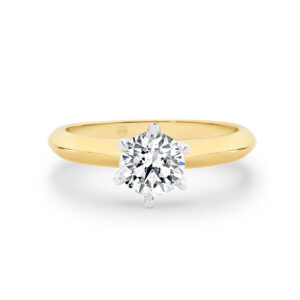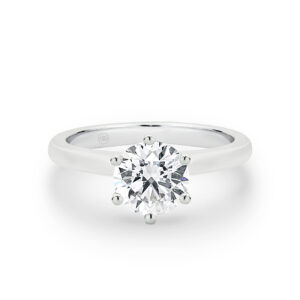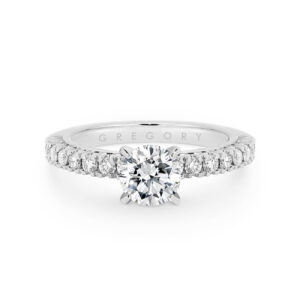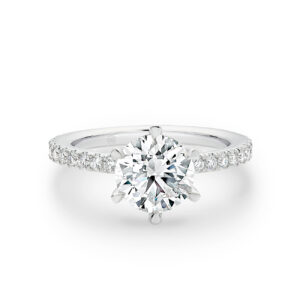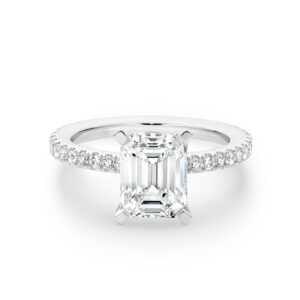
Top Tips for Watch Care
When it comes to watches, one topic that comes up more than any other with members of the Gregory Jewellers Watch Specialist team is how to care and maintain your watch properly. After all, these are precious objects and highly precise machines, so you want to look after them as best you can.
We recommend that you familiarise yourself with the relevant operating instructions and warranty conditions outlined in your manufacturer’s warranty booklets provided at the time of purchase. Please note, any repairs or alterations made by unauthorised watchmakers during the warranty period may result in your manufacturer’s warranty being void.
In addition to regular servicing and manufacturers recommendations we suggest the following general advice for keeping your watch looking good and performing correctly:
Look after the mechanism
Watches come with three main types of mechanism, or movement: automatic, hand-winding or quartz. Each need slightly different care. We also recommend any winding or setting of watches is done while the watch is not being worn, and where there is a low risk of it falling onto a hard surface.
Automatic movements
A self-winding, or automatic, mechanical watch has a sophisticated mechanism powered by the movements of the wearer’s wrist. That energy is stored in a long, tightly wound barrel spring. The efficiency of the self-winding process is directly linked to the motion of the arm wearing the watch. When fully wound, your watch has enough energy to run for at least 38 hours (and many more modern watches have around 70 hours of power when fully wound). This accumulated power reserve enables the watch to run throughout the night, or whenever else you’re not wearing it. If the stored power runs out, the watch will stop or have an insufficient reserve to ensure optimal accuracy. Before using it again, we suggest you wind it manually with about twenty clockwise turns of the crown to ensure proper operation. An automatic watch that has stopped will also need time, date, and any other calendar displays to be reset.
Hand-wound mechanical movements
Some models in our collections are equipped with hand-wound mechanical movements. A watch of this type is wound regularly by turning the winding crown clockwise until it reaches it tightens, some models will reach a stop. Once this point has been reached, do not force the crown any further since there is a risk of seriously damaging the movement. The autonomy of a hand-wound mechanical movement varies from model to model (check the paperwork that came with your watch for the exact specifications), but typically offer at least 40 hours of autonomy. We suggest daily winding to ensure proper accuracy and function. For many wearers, the winding of a hand-wound watch is a pleasing daily ritual.
Quartz movements
Watches powered by quartz movements require little in the way of regular interaction, set the time, date and any other functions in the usual way, and away you go. Power comes from a battery which will typically last from 1-2 years (or even more on some models). The majority of quartz watches are fitted with a central seconds hand and an end-of-battery-life indicator (EOL). Approximately two weeks before the battery is exhausted, the central seconds hand starts to advance in 4-second jumps, signaling that the battery must be changed. You should never leave an exhausted battery inside the watch because as it becomes degraded and it may damage the movement.
Important
We recommend that you have the battery of your watch changed by an Authorised After-Sales Service Centre. A battery change is generally combined with checking the operation of the movement and with changing the water-resistant seal in the case back.
Things to watch out for
A fine watch is built to handle the rigors of daily life, but there are a few things out there that might have a negative impact on the accuracy or longevity of your watch.
Extreme temperature
Do not expose your watch to extreme temperatures. This can reduce the service life of the battery and affect the effectiveness of the lubricants that keep your watch running well. Both mechanical and quartz watches are sensitive to severe changes in temperature. Avoid them as much as possible. It’s also not recommended that you wear your timepiece in a shower, steam room or sauna – the heat & steam may cause corrosion of the seals over time, compromising water-resistance.
Excessive vibration
Don’t forget that inside your watch is a finely tuned mechanism. To keep it ticking along nicely we do not recommend that you wear your watch during sports activities, and avoid any other excessive vibration, to protect it from possible damage.
Chemicals
Where possible, avoid any direct contact between your watch and chemicals. This includes things like solvents and industrial or domestic detergents, as well as cosmetics and perfumes. They may damage the seals of the watch, compromising water-resistance, or alter the appearance of straps, bracelets or the case.
Magnetism
Magnetism, even from common, everyday objects like speaks or magnetic clip fasteners or other electronic devices may affect its performance. The effect on a quartz watch will be of short duration only, and limited to the time it remains within the magnetic field. However, mechanical watches are more sensitive to magnetic fields. Watches are designed to withstand magnetic fields encountered in everyday life, but certain strong fields can magnetise steel components of the movement, particularly the balance spring. In certain rare cases, magnetised parts may stick together and cause the watch to run fast or even stop completely. In such cases, demagnetisation must be carried out at an authorised After-Sales Service Centre.
Water-resistance
The water-resistance of a watch protects the movement from dust, moisture and any deterioration when fully immersed in water. The natural ageing of the seals, wear and tear or accidental impacts to the crown, may lead to a significant deterioration in water-resistance. This is why we recommend a water-resistance check about every 12 months. The water-resistance of your watch may be written on the dial or case back in metres, bar or ATM (one bar or ATM is roughly equivalent to 10 metres of resistance).
Important
When a watch is immersed in water, under no circumstances pull out the crown or press the push buttons to change the date or start the chronograph. This could allow water to enter the case and damage the movement. If you notice condensation forming in the watch, you should quickly contact our after-sales service department to arrange an assessment as soon as practical.
General maintenance
A fine watch is an object that requires some care and attention. To preserve your watch as best possible, we recommend having it maintained regularly. Even if your watch is water-resistant, we advise you to clean it with a soft dry cloth reserved for this purpose. Only the metal bracelet and the case back may, if necessary, be gently cleaned with a soft, dry brush to eliminate any build-up of dirt of dust. Be aware of wearing bracelets or other jewellery next to your watch, as these may mark or damage the watch case.
Bracelet
A metal bracelet does not require specific maintenance, apart from an occasional light brushing. Use a gentle brush, such as a soft toothbrush, to remove any specks of dust and grains of sand that may be embedded between the links.
Leather strap
The service life of a leather strap depends on how often it is worn and under what conditions. To maintain it in good condition for as long as possible, you should avoid contact with water, greasy or acidic substances or cosmetics. Similarly, avoid prolonged exposure to sunlight or UV rays, as that may affect its colour. We advise against using leather maintenance products to clean or polish a leather watch strap. In summer, a leather strap is more exposed to external friction, and we recommend you temporarily replace it with a rubber strap or a metal bracelet suited to the model of your watch, if available.
Rubber Strap
The service life of a rubber strap depends on the conditions and frequency of its use. To maintain it in good condition for as long as possible, we recommend you avoid contact with greasy or acidic substances, and also with cosmetics. Similarly, avoid prolonged exposure to heat or UV rays. UV rays, in particular, may affect the very nature of the material. A natural rubber strap can be kept in good condition simply by washing in mild soapy water and rinsing in fresh water.
For other questions or concerns relating to servicing your watch, contact our After-Sales Service Department on [email protected]
